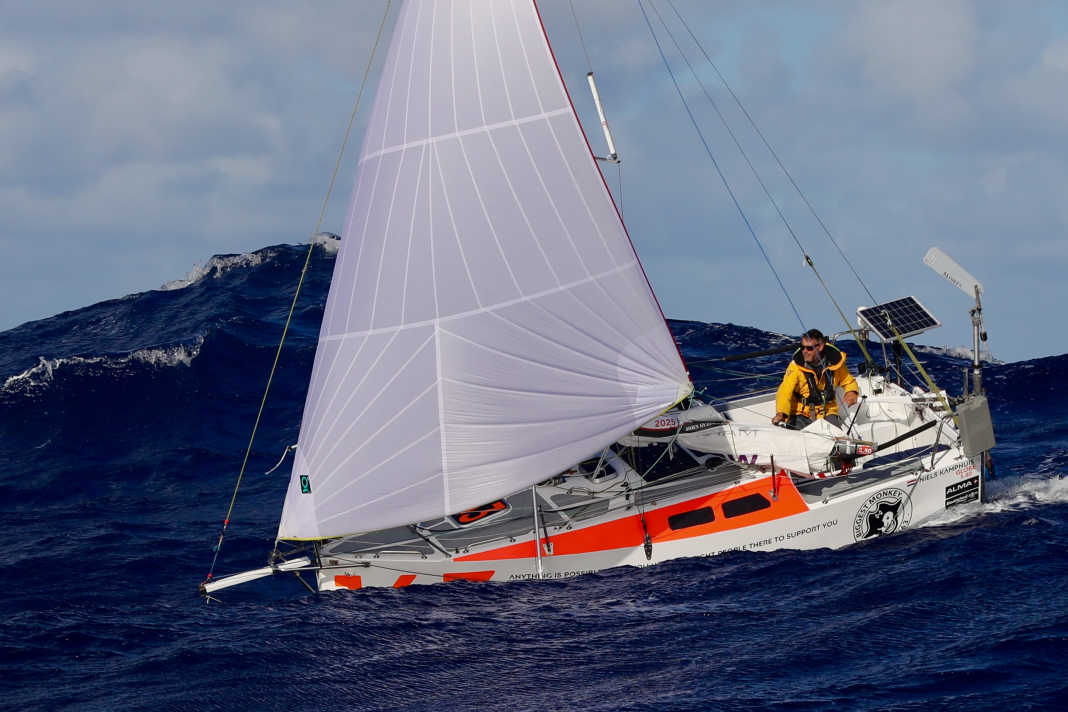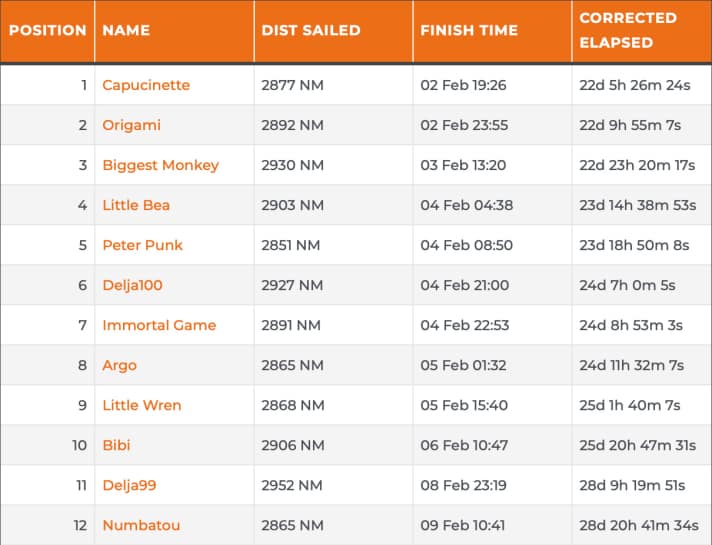





22 days and 5 hours: That's how long it took the Swiss Renaud Stitelmann, the winner of this year's Globe 5.80 Transat, to cross the Atlantic. According to the organisers, he sailed an average of around 5.6 knots and 135 nautical miles a day. This is a new record for the boat class and remarkable at the same time. The boat with which he achieved this measured just 5.80 metres, was self-built and made of plywood.
25 Globe 5.80 has so far succeeded in crossing the Atlantic
All twelve participants have now successfully completed the stage. Around six and a half days after the first, the last sailor, British adventurer Jasmine Harrison, has now also reached the finish harbour of Falmouth Harbour in Antigua. This means that 25 boats in the Globe 5.80 class have sailed across the Atlantic so far, reports Don McIntyre, the founder and organiser of the class. He was delighted with the sailors' achievements: "For me personally, this is the culmination of a 20-year journey in which we have supported the adventure with all our energy."
Strong trade winds and changeable conditions
The boats set off from Marina Rubicon on Lanzarote on 11 January. Stitelmann and Brit Keri Harris took the lead in the field early on. They were accompanied by quite strong trade winds for large parts of the route. Nevertheless, they also had to cope with changeable weather conditions, which included both very light and extremely strong winds with gusts of up to 50 knots and wave heights of four to five metres. The closer they got to the destination harbour on Antigua, the more the wind and swell eventually decreased.
This is how the participants of the third Globe 5.80 Transat crossed the finish line:

Christian Sauer: "It's like a rodeo"
Christian Sauer was relieved after his arrival. "I arrived safely, the boat is largely undamaged. Everything went well in that respect," he said in an interview with YACHT. He was particularly concerned about the violent movements of the boat. "It's like a rodeo. It's not just up and down - the boat turns in all directions." He often bumped into things - which led to bruises and swollen knees.
More about "Globe 5.80":
He had problems with the sails in particular. One of his two jibs was damaged to such an extent that it could no longer be repaired on board. This was caused by the stay riders rubbing against the sails and eventually tearing them. Sauer attributes this wear and tear to a problem with his wind steering system, which he was using for the first time. "The learning curve is very steep. I still have a lot to learn," he explains. In addition, his satellite communication was still not working properly; during this time he was only able to receive weather data three times.
Participation in Mini Globe Race is certain
These challenges must be resolved in the coming days. "Solving such problems is quite normal. That will continue to be the case; after all, I'm still building," explains Sauer. Nevertheless, it is now clear to him that he wants to continue. This means that Christian Sauer will start in the Mini Globe Race on 23 February. The race consists of five stages and follows the barefoot route around the world. The planned arrival of the fleet of participants at the finish line (again off Antigua) is scheduled for March 2026.

